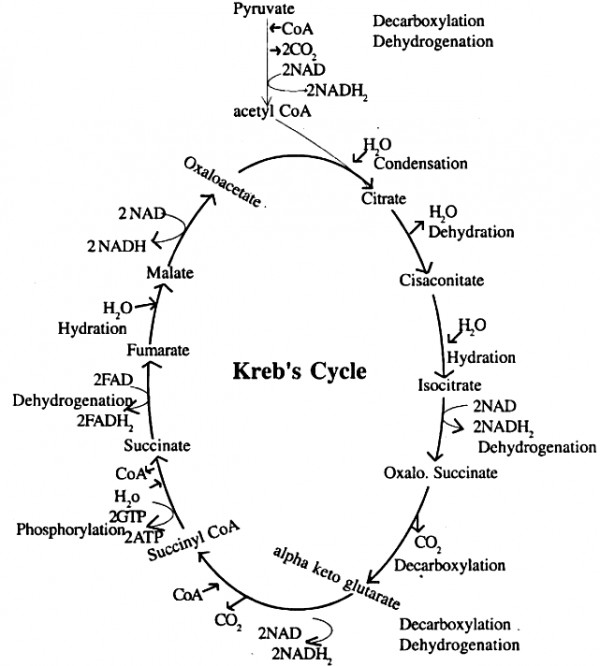Kreb’s cycle or citric acid cycle is second step of respiration and takes place in the mitochondrial matrix. Pyruvic acid formed during glycolysis is first converted to acetyl CoA a 2 Carbon compound which in the mitochondrial matrix to initiate Kreb’s cycle.
Condensation:
acetyl CoA combines with oxaloacetate in presence of water to give a tricarboxylic acid citric acid. CoA is released.
Dehydration and Hydration:
The citric acid then loses a molecule of water to form cis-aconitate which takes up a molecule of water and forms isocitrate.
Dehydrogenation:
Isocitrate undergoes dehydrogenation and forms oxalosuccinate. This yields 2 molecules of NADH2.

Decarboxylation:
By giving out CO2 – oxalosuccinate is converted to αketoglutarate.
Dehydrogenation & decarboxylation:
The a- ketoglutarate simultaneously shows dehydrogenation decarboxylation to form succinyl CoA, 2 molecules of CO2, NADH2 are released and CoA is added. Hydration &
Phophorylation:
Succinyl CoA in presence of water forms succinate, CoA is released and 2 GTP’s are synthesised which are converted to ATP.
Dehydrogenation:
Dehydrogenation of succinate yields Fumarate and 2 molecules of FADHO2 are formed.
Hydration:
Fumarate in presence of water yields Malate.
Malateby dehydrogenation gives 2 molecules of NADH2 and is converted to oxaloacetate. ATP Calculation.
8 NADH2 = 8 x 3 = 24 ATP
2 FADH, = 2 x 2 = 4 ATP
2 GTP = 2 = 2ATP
Total = 30 ATP